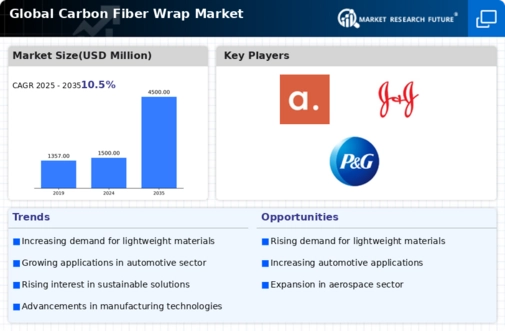Market Analysis
In-depth Analysis of Carbon Fiber Wrap Market Industry Landscape
The Carbon Fiber Wrap market is driven by a dynamic mix of multiple factors that shape its growth, predominantly more intensive demand for lightweight and high-strength materials across different industries. Carbon fibre wraps designation that includes products like carbon fiber reinforced polymers (CFRP) is unrivalled for purposes such as aircrafts, automotive industry and infrastructure.
The dynamics of the carbon fiber wraps market occur more and more to the aerospace business. Carbon fibre wraps have unsurpassed benefits, especially outstanding structural strength-weight ratio and corrosion resistance as one of the choices of quality for structures of an aircraft for the aerospace industry. The need to improve the fuel economy of an aircraft and High-grade carbon fiber wraps used for aerospace devices make it’s necessary in the Aircraft design and manufacturing process.
The market dynamics of carbon fiber are to a large extent defined by regulative standards and environmental aspects of carbon fiber Wrap production. The adoption of provincial safety and emission regulations, along with the developing attention to sustainability issues, largely determines the selection and use of carbon fiber wraps in all areas of production. The industry come to face tougher regulatory scrutiny with regard to the environmental effects of materials, directly developing biodegradable and recyclable carbon fiber solutions in order to comply with the stringent requirements.
Although cost efficiency is only one of the multiple drivers that make an impact on market dynamics within the Carbon Fiber Wrap industry, it plays a notable role. Industries need to save cost and at the same time they should not compromise with performance, and manufacturers search the way to maintain a balance between manufacture´s cost and the efficiency of their carbon fiber industries. This approach entails zeroing in on the cost factor, which eventually becomes the main priority for both producers and consumers, in as much as this drives innovation and nurtures competition in the market.
The global economy is the gardens of the current state of the Carbon Fiber Wraps market is, in turn, affected by divers factors in the world economy. Both short and medium term fluctuations in the economic factors may be used as indicator in the forecast of activities of the manufacturing industry, infrastructures and automotive sector which are involved in the carbon fiber wrapping works. Nevertheless, continued use of these coverings is seen as an incentive especially in very important applications such as in automobile manufacturing and aerospace engineering, and so from a broader scope this factor is useful in curbing down the escalating economic turbulences in the market.
Technological developments with this effect add new challenges to the industry which manufactures Carbon Fiber Wrap. Perpetual research and development crusades are what gives rise to the arrival of innovative C-Fiber formulations with admirable traits, including enhanced properties, greater flexibility, and ease of use. Technology has a great impact to the consumer’s needs and trends strive the manufacturers to compete intensely thus bringing market growth through the new and expanding sectors.






Leave a Comment